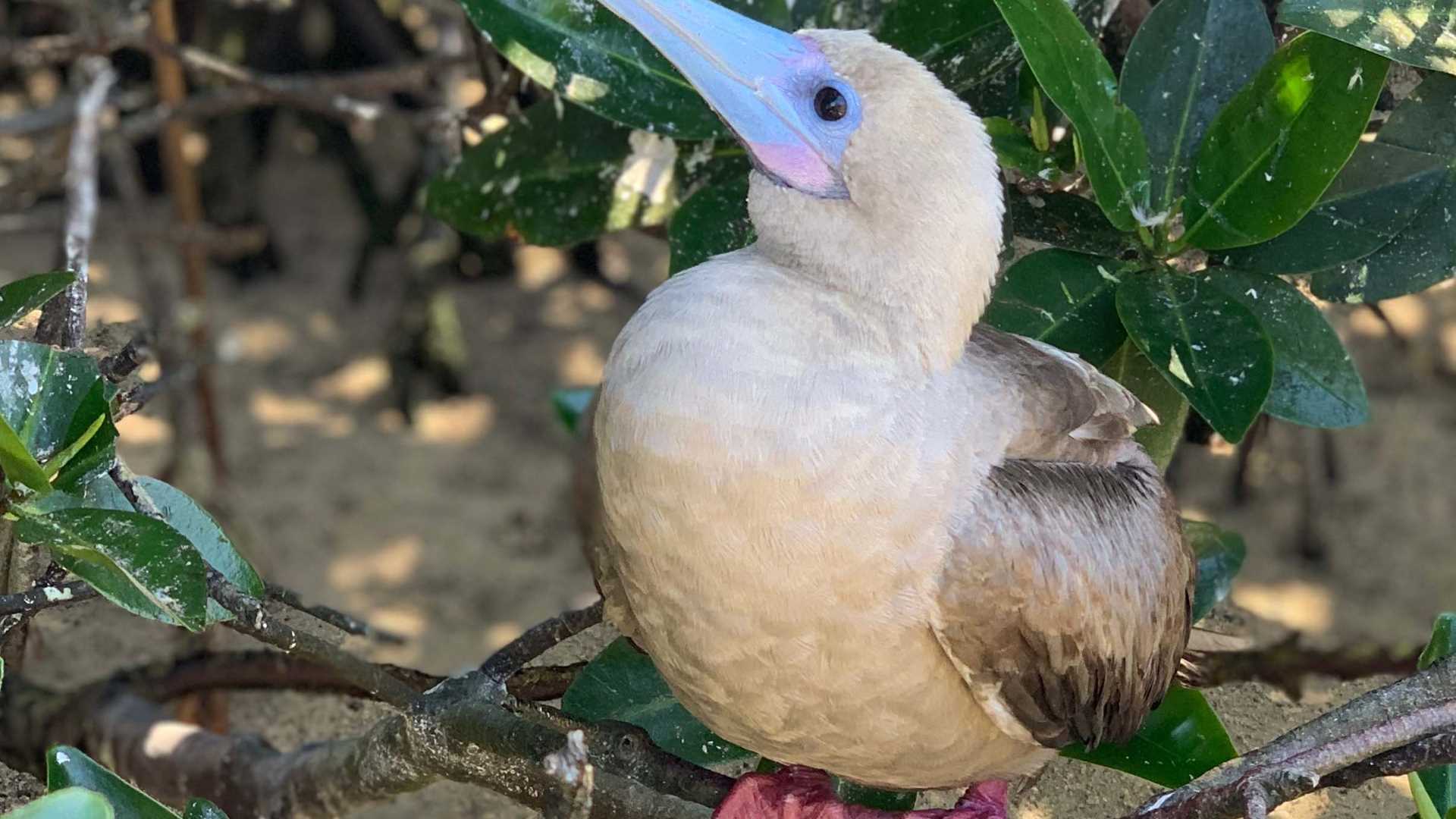Located on the northern hemisphere, Genovesa is one of the most incredible islands in the archipelago, due to it is home to over a million birds and because long time ago it was an active volcano with a large caldera, far from the central islands and far from the underwater Galapagos platform. This particularity could be the reason that land reptiles never arrived at the island, being impossible to find neither lava lizards nor land iguanas here.
We left behind Santiago Island and early in the morning, where we the crossed equator from the South. With the first beams of sun, I led a group of eager kayakers along the base of the steep cliffs inside the sunken caldera of Darwin Bay. We had a marvelous experience during which we saw red-footed boobies and frigate birds gliding kite-like, while in the ocean, storm petrels, sea lions, sea gulls and a large school of eagle ray close to the kayaks.
After breakfast the sun came out and we made a wet landing on a small coral beach and were immediately amazed by the number of seabirds nesting, roosting, and flying in this area; we observed some frigate birds and red-footed boobies were on their nests in the low shrubs. In the air, frigates and boobies soared on the constant breeze while on the beach sea lions lounged on the sand and in the waves. Walking along the trail we approached to the mangroves area, where fluffy chicks were the delightful of our guests while on the top of bushes some males frigatebirds with their unmistakable sounds, showed us their happiness after been accepted by a female. They proceed to embrace one another following a well elaborated ritual very common in sea birds around the world. After the beach, we came back onboard preparing for deep water snorkeling. It was sunny and the ocean warmer than on most days. Swimming along the cliffs we observed colorful fish and fur sea lions. Our guests recognized many of the more common species of fish, like the king angels, yellow-tailed razor fish, Moorish idols, large-banded blennies, rainbow wrasse, blue-chin parrot fish among others.
Later in the afternoon, we lead our guests up the steep and rustic steps and across the point of the island to search for petrels and short-eared owl, which is consider the top predator of the island, due to the lack of Galapagos hawks. We identified the large ground finch and the unique sharp-billed ground finch feeding on dry seeds along the lava rocks. On the bushes we admired the many fluffy baby frigates in their nests and the much larger juvenile Nazca boobies. Out on the flat lava flow many storm petrels were swooping around and disappearing into their nest holes. We found several of the well camouflaged short-eared owls that were hunting these numerous petrels.
It was late when we returned to National Geographic Islander; the sunset was magnificent, being possible to observe Marchena Island on the west and a flock of red-footed boobies coming back to Genovesa after an incredible day here in this natural paradise called Galapagos.









